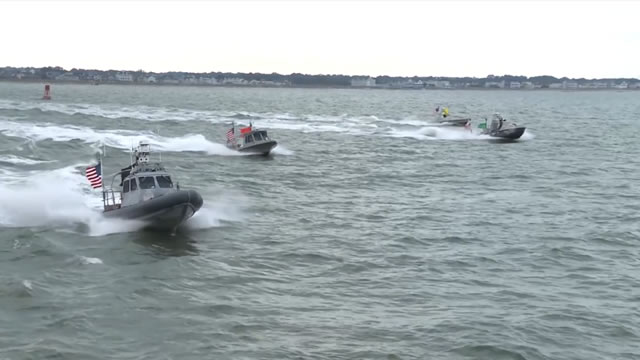|
|
|||
|
ONR Video
|
|||
|
|
|||
|
The demonstration held this year in October built upon the lessons learned from that successful demo. Brizzolara says that substantial additional capability has been added to CARACaS since the 2014 demo, including the ability for multiple unmanned surface vehicles (USVs) to collaborate on task allocation; the development of additional USV behaviors and tactics; and advances in automated vessel classification from imagery.
During the demo, unmanned boats were given a large area of open water to patrol. As an unknown vessel entered the area, the group of swarmboats collaboratively determined which patrol boat would quickly approach the unknown vessel, classify it as harmless or suspicious, and communicate with other swarmboats to assist in tracking and trailing the unknown vessel while others continued to patrol the area. During this time, the group of swarmboats provided status updates to a human supervisor. “This technology allows unmanned Navy ships to overwhelm an adversary,” added Molina. “Its sensors and software enable swarming capability, giving naval warfighters a decisive edge.” Naval leadership in recent years has emphasized a blended future force, leveraging the synergy of using manned and unmanned systems to complement each other while accomplishing missions. In the near future, unmanned boats can take on some dangerous missions, thereby protecting the warfighter, and they can do that in great numbers at a fraction of the cost of a single manned warship. Furthermore, these small boats are already in the Navy’s inventory (as manned craft) and can quickly and inexpensively be converted to an autonomous boat via the installation of a CARACaS kit. |
|||
Video: U.S. Navy ONR Testing Autonomous Swarmboats in "Safe Harbor" Demonstration
- Posted On











